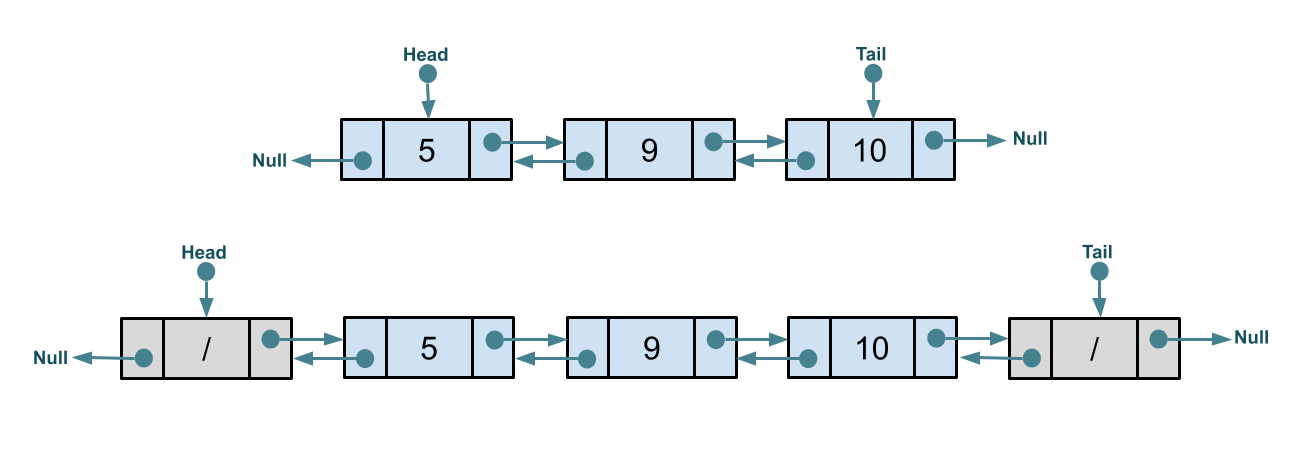Using Sentinel Nodes
- Explain the advantages of using sentinel node-based implementation.
A common practice when implementing a link list is to use sentinel nodes.

- Sentinel nodes are dummy nodes that you add to both ends of your linked list.
- You will have the
headand thetailpointer to always point to sentinel nodes. The constructor will construct the sentinel nodes; they will never be removed nor updated. - You should not count the sentinel nodes as elements of the data structure.
- The sentinel nodes should not be considered when iterating over the elements of the data structure.
Here is the constructor of LinkedList building the sentinel nodes:
public LinkedList() {
head = new Node<>(null, this);
tail = new Node<>(null, this);
head.next = tail;
tail.prev = head;
numElements = 0;
}
Using sentinel nodes eliminates many of the edge cases that arise in implementing linked list operations.
Exercise Update the implementation of delete (in DoublyLinkedList.java) to account for all edge cases. Consider head and tail point to sentinel nodes.
Solution
Well, we don't need to make any changes to the implementation of delete because with the addition of sentinel nodes, all those edge cases are accountd for!
public void delete(Position<T> target) {
Node<T> targetNode = convert(target);
Node<T> beforeTarget = targetNode.prev;
Node<T> afterTarget = targetNode.next;
beforeTarget.next = afterTarget;
afterTarget.prev = beforeTarget;
}
Resources
- Wikipedia's entry on Sentinel Node.